The passion fruit plant (passionflower) is a guest from the hot tropical moist forests, which, as it turned out, could perfectly settle with us. However, in order to grow an exotic culture at home, you need to have an idea of some of the nuances.
Material Content:
Description and types of plants
Passion fruit is an evergreen plant whose stems are covered with green foliage resembling vines. Passiflora has unusual shapes and surprisingly beautiful flowers, iridescent in various shades of the rainbow.
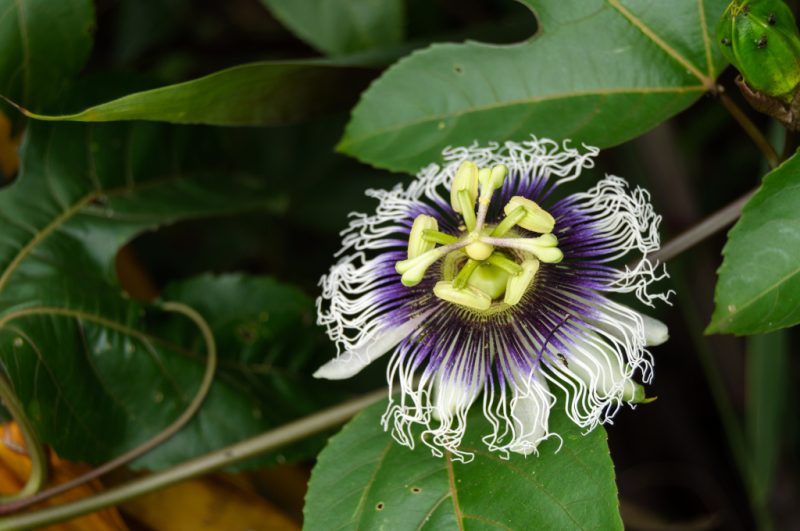
You can breed passion fruit not only for beauty. Its delicious juicy fruits will not leave anyone indifferent.
You can grow exotic culture in your home environment of any kind. But for these purposes, blue or winged passiflora is best suited.
Purple passion fruit is a variety that is unpretentious. She does not need as much heat as representatives of other species, but her fruits are juicy and sweet. In addition, such varieties as sweet granadilla and giant granadilla are popular in our country. The laurel passiflora and banana passiflora are no less demanded.
How does passion fruit grow?
Passion fruit at home grows excellently, but only for this it is necessary to create special conditions under which the tropical culture will feel comfortable.
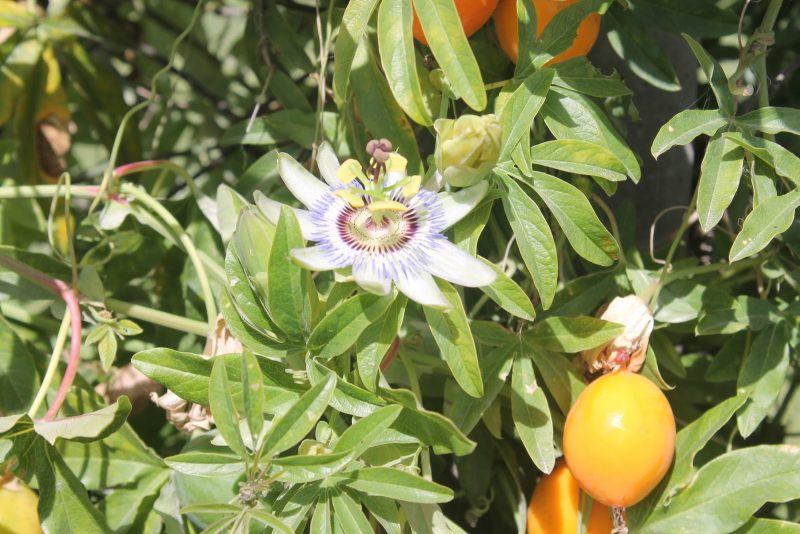
It is very important to protect the plant from the cold. If the passion fruit leaves become soft, yellow or opal, then passionflower does not have enough heat or moisture.
When growing passiflora in a comfortable environment, it can begin to bear fruit a year after planting. The plant lives about 6 years.
How to grow a plant from seed, seeds, cuttings?
Growing passion fruit can be done in different ways.
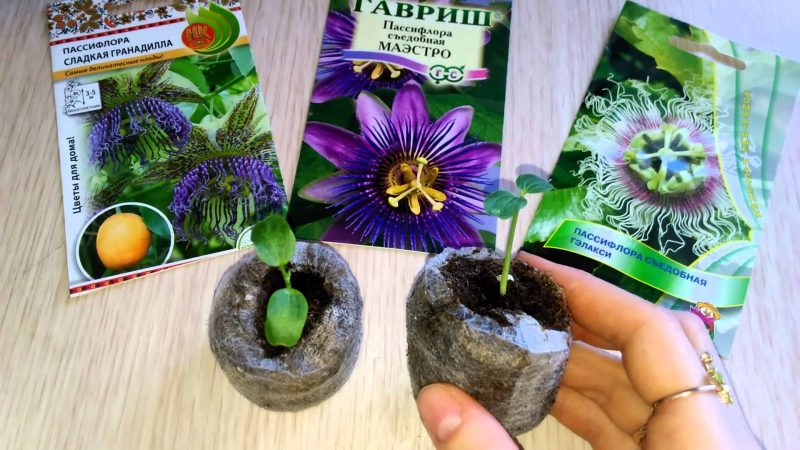
- From the bone. The bone pulled from the fruit is freed from the pulp and dried thoroughly. It is planted in the ground shallow. A pot with a seedling is placed in a warm place. It is important that the humidity is high. Systematic watering is provided.
- The seeds. Only fresh seeds will do. 2-3 days before planting, fresh passion fruit is bought, from which the seeds are extracted. They should be placed on a cloth and slowly triturated until the juice bags open. Then the seeds are washed and dried (you can not put in the sun). Rinse and dry again. A mixture is poured into a shallow container, which includes garden soil, sand and compost in equal proportions. Small grooves are made in the ground into which seeds are laid out. Top covered with a thin layer of soil. Seedlings are watered and placed in a warm corner. When the sprouts reach 20 cm, they are recommended to be transplanted to a place that will become permanent.
- Cuttings. Soil is poured into the container prepared for planting, prepared according to the principle similar to seedling. It is important to choose the right stalk. All young shoots with 3 or more buds are cut obliquely above the lower kidney. After cutting, you need to plant the cuttings immediately. For favorable growth, it is recommended to take care of creating a moist environment. An impromptu greenhouse would do. If everything is done correctly, then after 2 weeks the cuttings will take root. After this, passion fruit is transplanted to a permanent place.
Passion fruit care at home
Exotic passion fruit liana is a capricious plant that needs careful attention. In addition to regular watering, you need to take care of plant nutrition. Since passionflower loves to “eat”, it is recommended to feed her often and plentifully. Start dressing in the spring, then again in the summer and one more time in the fall. Feeding should be a slow-acting organics with a low nitrogen content. A great option is granular chicken droppings. In winter, fertilizers are not needed.
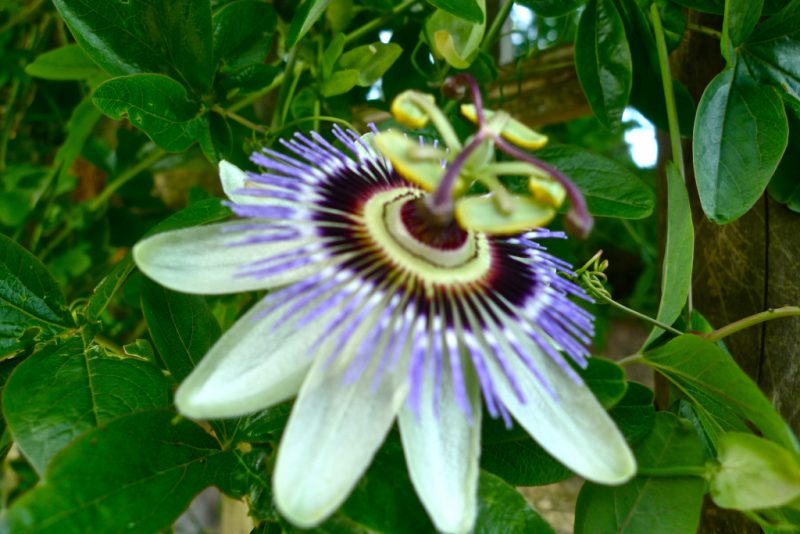
Important! Particular attention must be paid to high-quality watering.
Despite the exotic guest’s special love for humidity, do not overdo it. It is recommended to organize watering of creepers often, but only after the soil surface dries. In winter, it is enough to organize watering once a week.
When cultivating passiflora in the home, you need to regularly spray it from the spray gun. Lack of moisture will lead to sad consequences in the form of discarded leaves and buds.
The nuances of growing at home
Passion fruit is quite a heat-loving fruit. It grows quickly and begins to cling to any fulcrum. Therefore, you should first worry about the organization of the suspension system. The best option is a grid.
It is interesting:azalea care
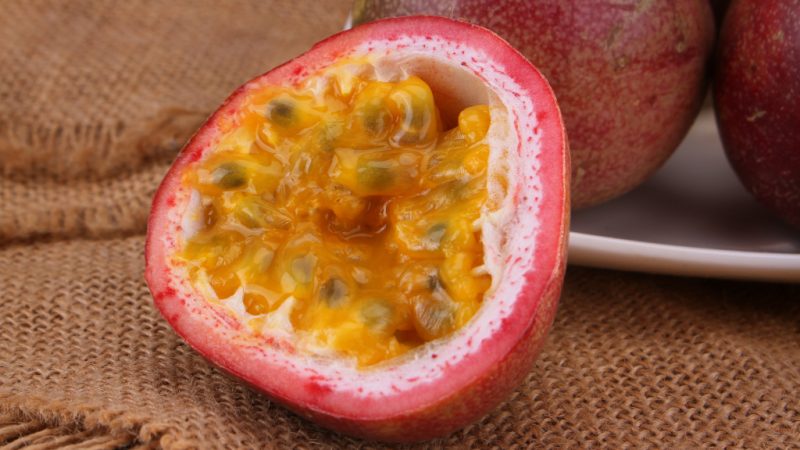
During growth, the vine and leaves of the plant grow rapidly, so initially you need to organize a strong base. You should not worry about additional garters, as the passion fruit antennae are reliable in themselves and cling tightly.
The plant is unpretentious in the choice of soil, so you can even plant it in a sod brought from a nearby forest.
For full growth requires bright lighting. Do not worry about shading again.
Important! Passion fruit grows well in the shade. However, in this case, do not count on active flowering.
The room should be regularly ventilated, it is very useful for the plant. In summer, she especially needs fresh air, so it is recommended to put the pot with seedlings near an open window or take them out onto the balcony.
How to trim and transplant?
Pruning
Cut passion fruit should be in the spring. It is recommended to do this once every 2 years. First you need to get rid of all the old and weak shoots.
Important! You can not cut the old branch at the very base.Be sure to leave a few buds, a new shoot can grow from them.
Cut passion fruit is necessary only before the onset of flowering. If you do this at a time when the plant has already bloomed, it will negatively affect it - an exotic guest will weaken, and its yield will decrease significantly.
Transfer
Young plants need to be replanted every spring, mature - once every 2-3 years. The new tank must be larger than the previous one. But too large a pot should not be taken either, since in this case all the forces of the vine will be spent on root growth and green mass growth, while flowering will noticeably decrease.

Passion fruit is a tropical plant that can be safely grown at home. Subject to all maintenance requirements, an exotic liana will delight gardeners with beautiful flowers and delicious fruits.












